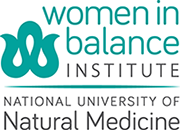Focus and Goals
When women over forty consider health care (in partnership with their primary health care provider), they should be striving for wellness and hormone balance.
Specifically this means:
- Relief from perimenopausal/menopause symptoms without increasing risk of diseases
- Guidance to prevent diseases such as osteoporosis, heart disease, breast cancer and other diseases.
Treatment Options
The range of treatment options can fall into one of two categories: conventional and natural. In deciding on a treatment, women should be considering menopause symptoms as well as the risk for disease. Some specific treatments are listed below:
- Diet, exercise, lifestyle, stress management
- Nutritional supplementation
- Botanical therapy
- Compounded bioidentical hormone preparations
- Pharmaceutical company bioidentical hormone preparations
- Non-bioidentical HRT (Hormone Replacement Therapy)
- Non-hormonal pharmaceuticals
Although more conventional HRT regimens exist and new non-hormonal drugs are being developed, a health care provider that has an understanding of the whole spectrum of options – from the most natural to the most conventional – will be in the ideal position to properly advise and work with you on developing a customized optimal treatment and prevention plan.
While many women choose to “self-treat” with over the counter substances for menopause symptoms, and many are successful, they may just be treating symptoms such as hot flashes and mood swings, but not fully understanding the “heart of the matter.”
Evaluation and Testing
Each woman should be evaluated, for individual perimenopause or menopause symptoms AND for individual risks of future diseases.
This approach requires:
- A thorough health history
- Judicious use of tests to assess hormone status [More info on hormone testing]
- Diagnostic tests to assess metabolic function and determine risks for osteoporosis and heart disease
- An appreciation of risk factors for breast cancer
Perimenopause and menopause assessment should involve understanding the specific symptoms you are having, the severity of them as well as how often they occur.
Some sample questions include…
- Do you have problems sleeping?
- How often do sleep problems occur?
- Do you have trouble falling or staying asleep?
- Questions to determine risk factors for osteoporosis, cardiovascular disease, breast cancer, and dementia (such as Alzheimer’s)
Note: Risk factor questions should have a determination of “low risk”, “some risk”, and “high risk”. The identification of disease risks may not seem important in the early perimenopausal years, but acquires increasing importance with aging.
More information on specific exams and tests.
Requirements of a Health Care Provider
Your health care provider should talk to you about not only your physical but your emotional health as well, and understand your future health goals.
In order to accomplish health and hormone balance goals, both you and your health care provider must embrace a very individualized approach.
This combined full picture assessment leads to treatment choices that may involve alternative and/or conventional therapies along with enhanced lifestyle strategies. Symptoms need to be understood from the root cause, and what relationship there is to long-term concerns such as bone density, blood pressure, cholesterol levels, vaginal tissue health, and other concerns.
Optimal Health is Attainable!
It is not an unrealistic goal to be healthy for a lifetime. Not only is it realistic, but it is also a necessity. You deserve to reach the level of health that sets you free from interfering symptoms and diseases. It simply takes knowledge of yourself, your body, and the treatment options that exist for you.
Just remember, every woman is unique. The ultimate goal is balance.


